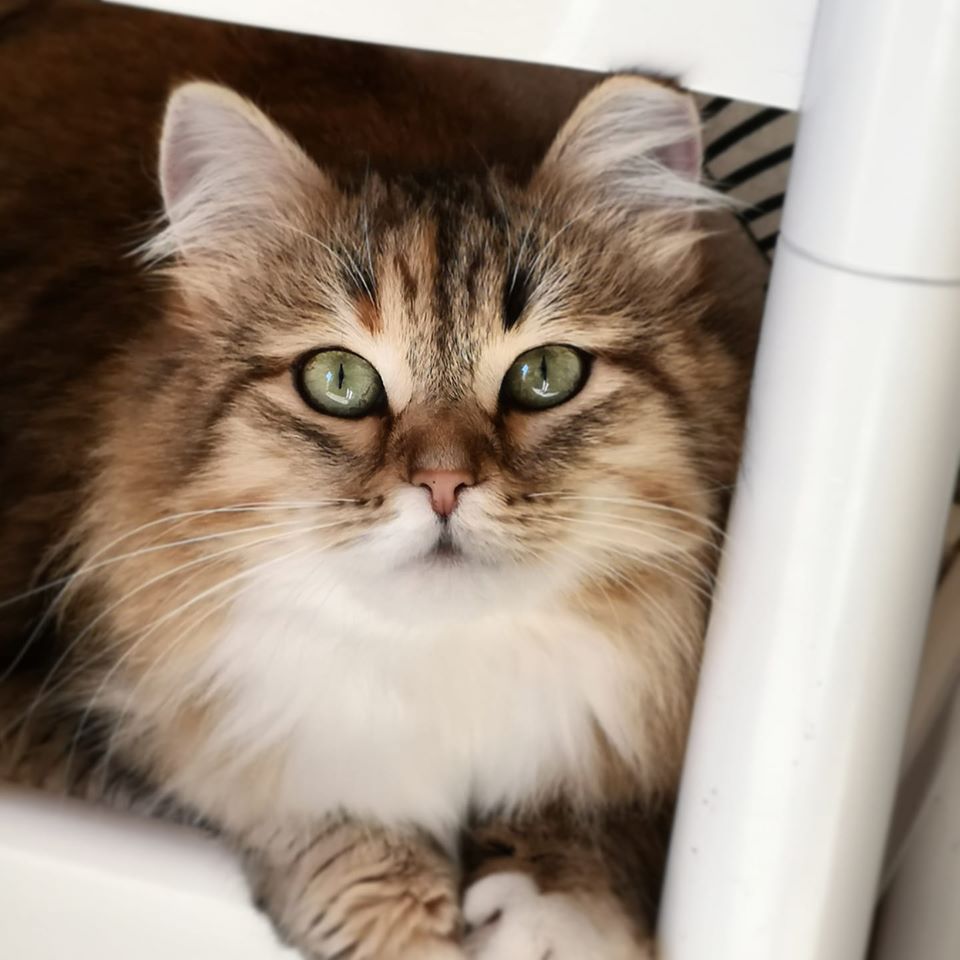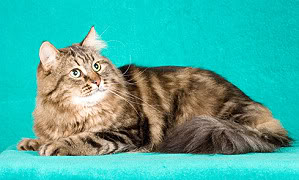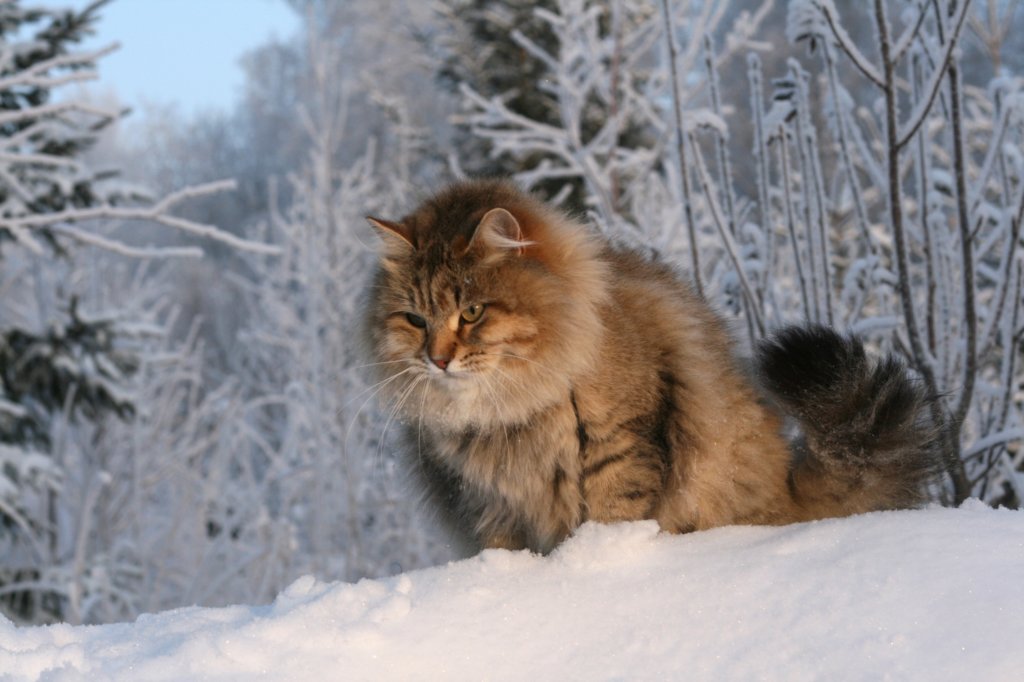Buying a healthy Siberian.
This page is probably the most important page of the whole website.
The goal is to educate future Pet Owners regarding Siberian health because if pet owners know what to look for, know what tests to ask for, what questions to ask and what to expect from a breeder, the entire breed wins since sellers will have to match the public expectations in order to give continuation to their breeding plans and stay competitive.

Of course the relationship of breeder and pet owner should be a relationship of trust and the goal here is not to encourage mistrust, it’s the opposite, we encourage a good communication and with these tips, you will be able to communicate better. A good breeder will be proud to talk about their work. Actually, passionate breeders, LOVE to talk about their work.
Since the adoption is such important step, pet owners should know more about the breed, about the parents of the cat they are buying, so this is only natural.
I will speak here mostly about Siberian health but some of the advice is also relevant if you want to buy a Neva kitten, especially regarding testing.
There are labs nowadays that can analyse the entire genome of the cat, keeping the raw data stored (for future use) and detecting several metabolic and hereditary disorders.
Quality is not an accident, it is in the genes.
Ask if the parents of your kitten were tested with MyCatDNA since this is one of the only labs checking metabolic disorders as well as hereditary diseases in a “pack”. There are needed tests included like Pk Deficiency in Siberians as well other features that are useful for the breeder’s work, like parents’ blood group for example.
You can now click on each key word in the text below to be directed to a website that will explain the disease, sites or abbreviations used.
Two other important diseases to check are HCM and PKD.
PKD is not a common disease in Siberians but the parents should be checked at least once or twice by clinical examination. The DNA test available was not conceived for Siberians therefore the clinical examination is obligatory at 1 and advised at 3 years old.
HCM (Hypertrophic Cardiomyopathy) is the most important point to be checked and especially if you are buying a golden kitty.
HCM is a very complex matter because some other diseases can mimic HCM symptoms.
HCM is rather rare in Siberians but the prevention work must be done so the disease will remain rare.
Golden lines present more risk because golden is a difficult recessive gene or “polygene” and in order to obtain this color, irresponsible breeders do not hesitate to go heavy on inbreeding and line breeding by consequence we see more often HCM cases in lines where you see more golden individuals but not only. Each Stud or Queen has to be tested before mating for the first time.
At the ISBC* (my other site dedicated to Siberian breeders), we work with Pawpeds HCM health program for total transparency. The cat is tested with a veterinary that is chosen and indicated by Pawpeds, a specialist in feline cardiology. Regular veterinaries cannot join the program.
The breeder signs a form and the results, whatever they may be, go to Pawpeds and are shown on line on the cat’s genealogy.
Here is an example:
Click on the health info for Taifun Adagio and you will see the test results on line.
https://pawpeds.com/db/?a=p&id=1298610&g=4&p=sib&o=ajgrep
Pawpeds is also an important tool to check the genealogy of your kitten.
Breeders will give their clients a 4 generation pedigree but BEFORE purchasing a kitten you should take a look at its genealogy using Pawpeds. Ask the breeder to see the match, the couple’s ancestors, the genealogy tree with both parents on Pawpeds.

Here is an example with one of my kittens, Damman Amur Oleisha, you have mum Damman Amur Ninotchka and dad Cica Tuxedo.
https://pawpeds.com/db/?a=p&id=1463582&g=4&p=sib&o=ajgrep
I display the genealogy of my Studs and Queens on their web page using Pawped showing the cat’s genealogy.
You can see Oleisha has 0% inbreeding COI* in 4 generations.
With this tool you can observe the level of inbreeding of your cat in the first four generations. These first four generations will have the most influence from ancestors in your cats health.
In another page you will have more information about Pawpeds and how to use the match making tools and all the information they provide that could be useful for you.
If you checked the genealogy of a kitten and you saw something that you think is not great “like the grand mother is a bit inbred” speak to the breeder because with certain things is up to the breeder to decide and they will probably explain why they are using this or that cat.
However we do not advise anyone buying a kitten that is the product of a half brother half sister marriage, mother and son, father and daughter, close cousins and and the ideal is to find 0% inbreeding coefficient on those 4 first generations on Pawpeds or a very low number.
The excuse often given by breeders saying they “wanted to fix type” or “a certain trait” is not acceptable and often not true. Most people use inbreeding because they are lack options or to achieve recessive fur colors like golden and blue. Color oriented breeding plans are often a disaster. The main goal for these breeders are purely aesthetic passing looks before health.
FIP Feline Peritonitis.
It is a very complex subject and most cats living in a community are carriers of the feline Corona virus.
To give you and idea, between breeders nowadays we don’t ask anymore if the cat is positive or not because we know they all are positive. It would be rare to buy a cat that is tested negative for feline Corona virus.
There are a few things you can observe: if the litter is homogeneous in size for example or if you have a few big and a few really small kittens, basically a big difference in size. You should ask what is the historic of the parents regarding FIP.
Nowadays it would not be wise to neuter every single cat who produced a FIP kitten because we know that sometimes the “match” is the problem. One cat can produce FIP kittens with one partner and never with others and if the cat has a healthy heart, since FIP is not the only disease we must care about, it is not advised to neuter every single cat that produced a FIP kitten. It is a question of common sense: a cat that produces FIP kittens with many partners can be neutered but another who only ever produced FIP kittens with one partner and is otherwise very healthy should be kept in breeding plans. Of course this is only my opinion but I have a lot of experience and close to 400 kittens bred (among these most are Siberians).
In general it is a good idea to inquire with the breeder the FIP historic of the match and each isolated parent.
The higher the inbreeding level of the cat, the more risk for a poor immune system, FIP and hereditary diseases.
What would be the ideal inbreeding COI*? Zero in the four first generations and less than five in ten generations seems reasonable.
It is important that the breeder has a good sanitary protocol in place and the cats living in small groups of 2 to maximum 3 cats. It is never a good sign to arrive in a cattery and see 10 cats living in one room and adults mixed with kittens that are not their own.
Arriving at the new home.
When the cat arrives in his new house, you should avoid situations of extreme fatigue or stress, like really long trips just after the cat’s arrival. Avoid introducing them too fast other pets like dogs or older cats. Kitty will need, rest, love and to gradually get to know his new family and friends. The ideal is to present them slowly during one or two weeks. Never leave a kitten sleeping with another pet they don’t know because they will not have a relaxed sleeping night and they need their sleep.

If you have more than one cat, you will need one litter tray per cat and keep it extremely clean.
Make sure you take your kitten to the veterinary on the 7 days following the adoption or respect the delay the breeder will give to you. This will allow you to get to know your veterinary and to check on your kitten.
You should weight your kitten at least once a month and write down the weight so you can check the its growth.
Following these tips you will put all the chances of having a healthy kitten on your side. When you deal with live beings, “Zero risk” is not possible to achieve, but it is the duty of a responsible breeder to be as close as possible to the “Zero risk” by using all the available tools we have and of course knowledge.
ISBC is the International Siberian breeders club created in 2015.
COI* Inbreeding coeficient